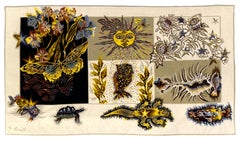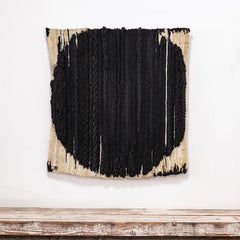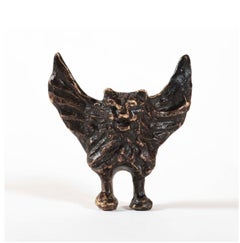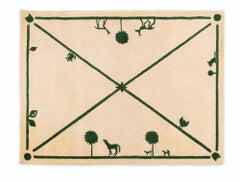Diego Giacometti Art
For Swiss sculptor Diego Giacometti, a talent for art ran in the family — his brothers were multi-disciplinary artist Alberto Giacometti and architect Bruno Giacometti, and their father was Post-Impressionist painter Giovanni Giacometti. But Diego was a gifted artist in his own right, creating furniture and lively animal sculptures that earned him considerable acclaim in his later years.
Diego was born in the farming village of Borgonovo in 1902. The Giacometti patriarch encouraged his sons to pursue art, and Diego and Alberto began working together in a Paris studio when Diego was 25. They engaged in a rivalry that is typical of like-minded siblings but were also supportive of one another.
Alberto pushed Diego to become a caster, and Diego served as his brother’s assistant, helping bring his designs to life. Diego also sat as a model for many of Alberto's now-revered sculptures and busts, as the sculptor worked chiefly with models plucked from his personal life. The duo also regularly created artwork and objects for French interior and furniture designer Jean-Michel Frank, whose other collaborators included Pablo Picasso and Henri Matisse.
Diego began focusing more on his own bronze sculpture during World War II. Inspired by his childhood farm life, he created bronze horses, dogs, cats, mice and foxes. During the late 1940s, Alberto began work on his most famous modernist sculptures — very tall and thin figurines that came to be associated with frailty and loneliness — while Diego branched out into furniture design. The latter’s tables, seating and other pieces earned him an array of devoted clientele. Celebrated French fashion designer Hubert de Givenchy sought his work out with frequency.
After Alberto died in 1966, Diego continued designing furniture and attracting more clients. He worked on projects for Fondation Maeght, Marc Chagall National Museum and Musée Picasso Paris.
Find a collection of original Diego Giacometti art and furniture on 1stDibs.
1980s Art Deco Diego Giacometti Art
Tapestry, Wool, Cotton
20th Century Modern Diego Giacometti Art
Tapestry, Wool
1960s Modern Diego Giacometti Art
Fabric, Textile, Tapestry, Wool
20th Century Pop Art Diego Giacometti Art
Tapestry, Wool
21st Century and Contemporary Contemporary Diego Giacometti Art
Wool, Tapestry
1970s Abstract Diego Giacometti Art
Fabric, Textile, Tapestry, Wool, Dye
Mid-20th Century Abstract Diego Giacometti Art
Fabric, Textile, Tapestry, Wool, Dye
Mid-20th Century Abstract Diego Giacometti Art
Fabric, Textile, Tapestry, Wool, Dye
1980s Abstract Diego Giacometti Art
Fabric, Textile, Tapestry, Wool
1980s Abstract Diego Giacometti Art
Fabric, Textile, Tapestry, Wool
21st Century and Contemporary Abstract Diego Giacometti Art
Tapestry, Cotton, Silk, Dye
Early 2000s Contemporary Diego Giacometti Art
Fabric, Textile, Tapestry, Wool, Cotton, Linen
Mid-20th Century Abstract Diego Giacometti Art
Textile, Tapestry, Wool, Linen, Thread, Fabric
Late 20th Century Diego Giacometti Art
Bronze
1980s Post-War Diego Giacometti Art
Tapestry, Wool, Cotton




